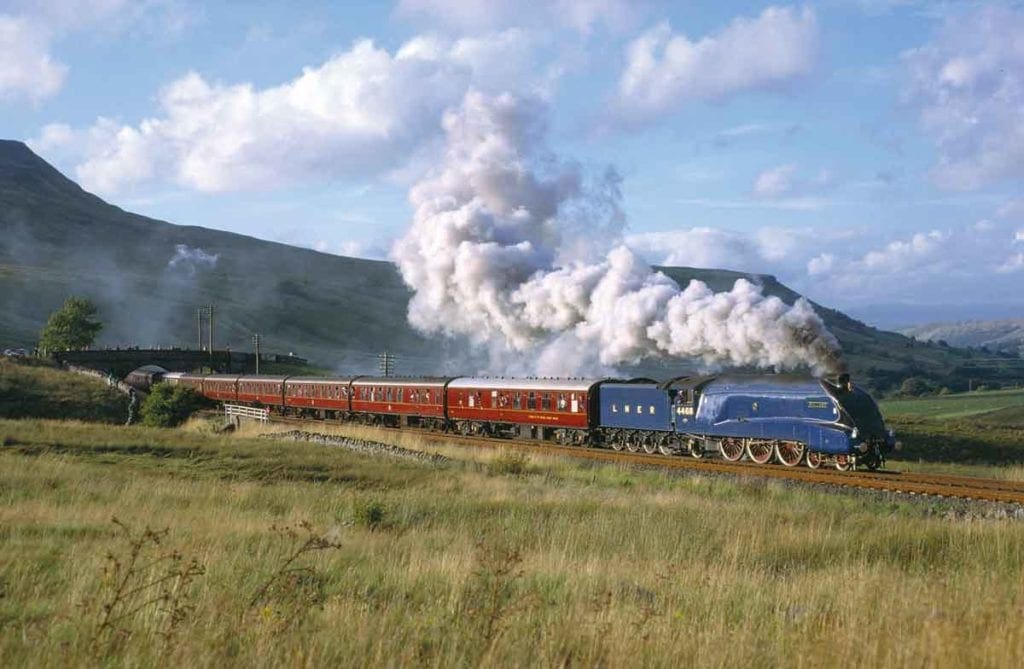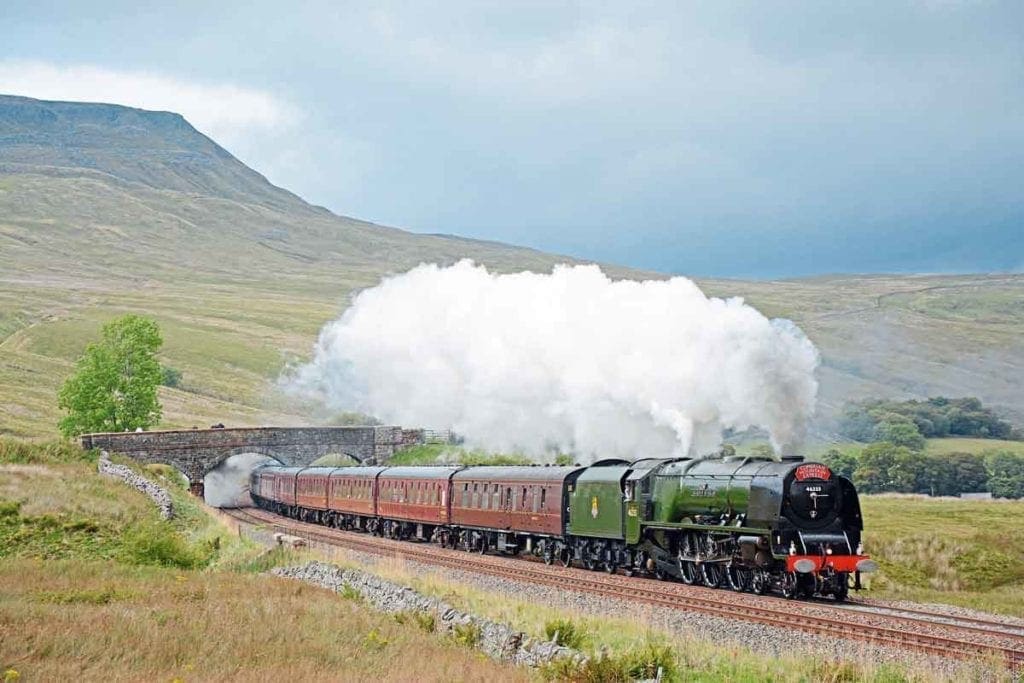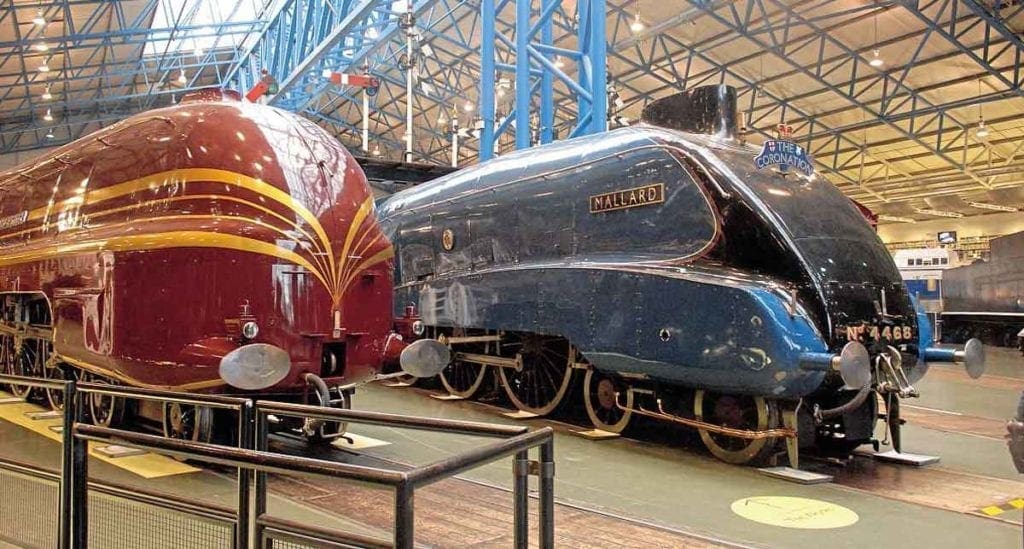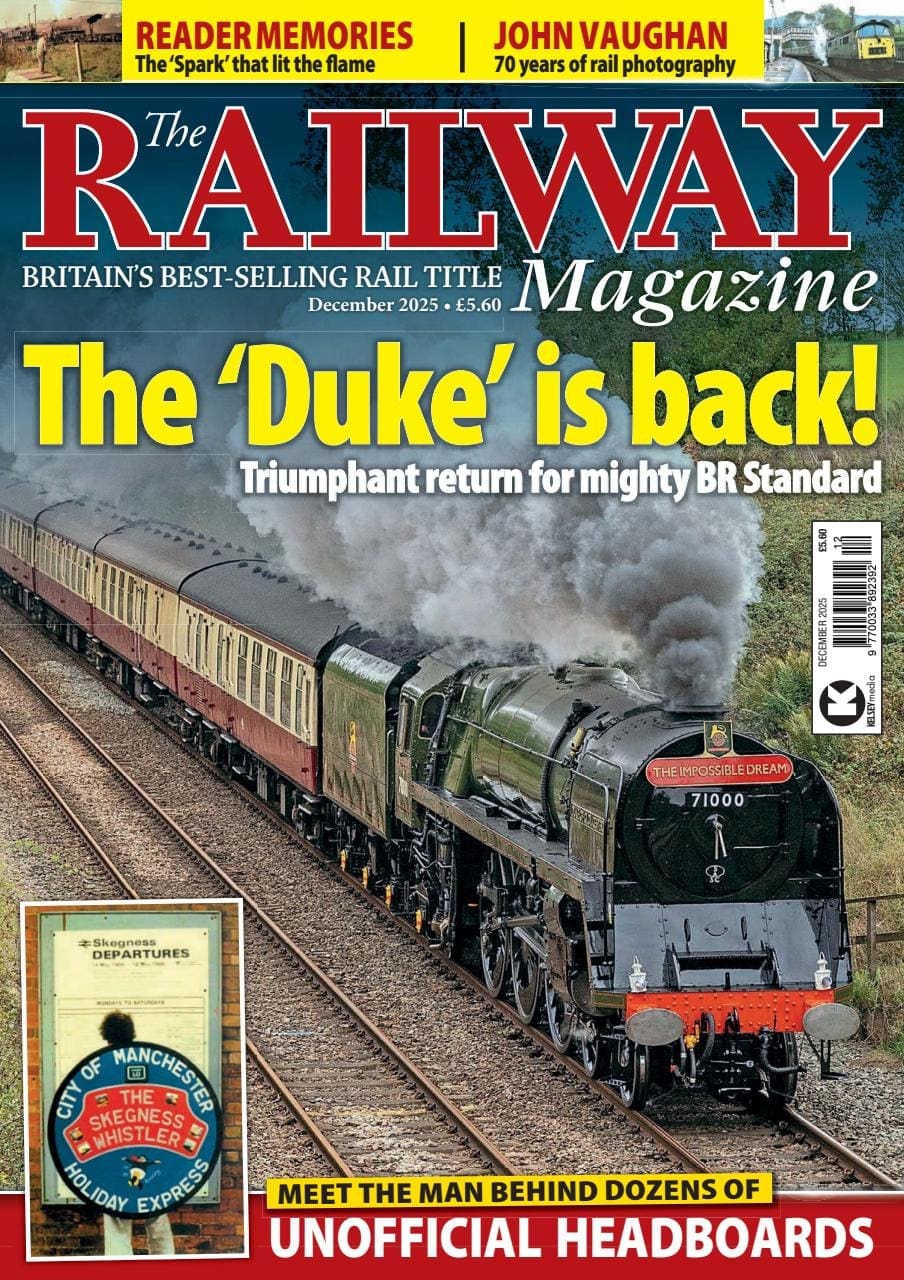
One of the greatest celebrations ever held in the railway heritage sector began on July 3, 2013. Marking the 75th anniversary of Britain’s 126mph world speed steam record set by LNER streamlined A4 Pacific No. 4468 Mallard on Stoke Bank in Lincolnshire.
All six surviving class members, including two temporarily repatriated from North America, were brought together at the National Railway Museum in York for the first of three phenomenally successful Great Gatherings under the banner of Mallard 75.
Also in the summer of 2013, two other preservation icons marked their 75th birthdays – LMS Princess Coronation Pacifics No. 46233 Duchess of Sutherland and No. 6229 Duchess of Hamilton.
From the history of steam through to 21st century rail transport news, we have titles that cater for all rail enthusiasts. Covering diesels, modelling, steam and modern railways, check out our range of magazines and fantastic subscription offers.
Both celebrations were extremely low-key affairs when compared with Mallard 75.

It is said that history does not remember the ‘also rans’: taking a footballing analogy, who recalls the team that finished runners-up in the Premier League or losing finalists in the FA Cup two or three seasons on?
When they reclaimed the world record from Nazi Germany, Mallard driver Joe Duddington and fireman Thomas Bray also snatched the British record back from their greatest rivals, the LMS.
Just over a year before, on June 29, 1937, equally daring Crewe North driver Tom Clark had beaten the LNER by taking chief mechanical engineer William Stanier’s new Princess Coronation streamlined Pacific No. 6220 Coronation to a claimed 114mph.
The LMS Princess Coronation class comprised the most powerful steam locomotives ever to be built for use on the British railway network.
In the Thirties, the zenith of the steam age, the LMS and LNER competed to see whose express trains could get from London to Scotland in the fastest time. Mallard had the benefit of the LNER’s great racetrack, Stoke Bank, while Coronation set its record on the less favourable Madeley Bank.
Railway speed record attempts have rarely, if ever, been made on a level playing surface, almost all of them were achieved on different gradients, with different loadings and variable circumstances on the day.

3300hp under test
The LMS Princess Coronations, some of which were streamlined as a response to Gresley’s ‘Streaks’, were the most powerful steam locomotives ever to be built for the British railway network.
In terms of absolute power, examples were recorded as producing 3300hp under test, making them far more powerful than the diesel engines that replaced them.
Many experts have expressed the view that a Princess Coronation, or Duchess, as the nonand destreamlined versions were later known, could have easily given Mallard a run for its money if it had been allowed to stage a record attempt on Stoke Bank. Railway historians have long debated the comparative merits of both rival types.
Yet it is Mallard that holds the record, which given the modern-day speed restrictions on steam locomotives, will almost certainly never be broken.
Had the Second World War not brought the curtain down on the last great age of racing steam trains, it is almost certain that the LNER or LMS would have aimed to break the record once more.
So, rightly or wrongly, the Princess Coronation class must remain as the runner-up, the losing cup finalist beaten by a single goal.
That is sad, because there are many experts who claim that the Princess Coronations were the finest British express passenger locomotives ever built.
Duchesses in accidents
JULY 21, 1945: No. 6231 Duchess of Atholl was hauling an express passenger train, which overran signals at Ecclefechan, Dumfriesshire, and collided with a freight train being shunted. Two people were killed and three injured.
APRIL 17, 1948: No. 6251 City of Nottingham was hauling a mail train which was in a rear-end collision with a passenger train at Winsford, Cheshire, killing 24 people. It was the first major accident for the newly nationalised British Railways.
APRIL 25, 1949: No. 46230 Duchess of Buccleuch was hauling a passenger train that overran a signal and was derailed at Douglas Park signalbox, Motherwell, Lanarkshire. The signalman was suspected of having deliberately moved points beneath the train.
OCTOBER 8, 1952: Hauling an express passenger train, No. 46242 City of Glasgow overran signals and crashed into a local passenger train at Harrow & Wealdstone, Middlesex. Another express passenger train ran into the wreckage. The second deadliest railway accident in Britain left 112 people dead, with a further 10 dying later from their injuries.
FEBRUARY 3, 1954: No. 46250 City of Lichfield was hauling a passenger train which derailed on a broken rail inside Watford Tunnel, Hertfordshire. The rear three carriages became divided from the train at Watford Junction station, one of them ending up on the platform. Fifteen people were injured.

